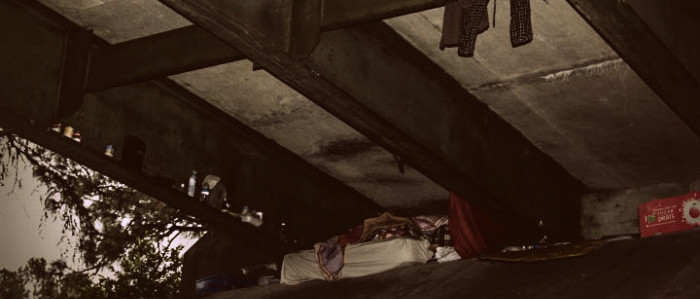
In the traditional system, homeless individuals are moved through levels of housing that will eventually lead to independent housing. For instance, from the streets to the shelters, and from the shelters to a housing program, and from a housing program to an independent apartment. In the housing program, treatment is given to battle some factors surrounding homelessness like, substance abuse, mental health, job training, and domestic violence.
Graham Kelly, a former outreach and intake specialist in a Supportive Services for Veteran Families (SSVF) program, witnessed the successes of the Housing First model. Kelly believes that there is a highly subjective process in the traditional system where the homeless have to pass ‘gates’ before they are able to be housed. For instance, some of the gates include the completion of treatment or sobriety programs, classes, record expungement, and attendance at religious functions.
Housing First models are revolutionizing outreach methods and have a higher success rate, because there are less strings attached.
The Housing First model places attaining permanent rental housing on the top of the priority list without imposing time limits (National Alliance to End Homelessness, n.d.). After housing is attained, SSVF programs continue to offer a variety of services to promote housing stability and individual well-being on an as needed basis. The chronically homeless will likely need some sort of support on a permanent basis, but the amount of support is considerably less than the traditional model. Kelly states:
The vast majority of homeless individuals and families fall into homelessness after a housing or personal crisis that led them to seek help from the homeless assistance system. For these families and individuals, the Housing First approach is ideal, as it provides them with assistance to find permanent housing quickly and without conditions. In turn, such clients of the homeless assistance networks need surprisingly little support or assistance to achieve independence, saving the system considerable costs.
The Housing First model has shown great success outside of Veterans Affairs. Utah implemented the model in 2005 and has since seen a 72% decrease in homelessness (Carrier, 2015). The Denver Housing First Collaborative (DHFC), did a study that found an overall improvement in the health and residential stability of its participants (Perlman & Parvensky, 2006). The participants had an average of eight years of homelessness, and of this 77 percent have continued to remain housed in the program, and more than 80 percent have maintained their housing for six months (Perlman & Parvensky, 2006).
In Kelly’s experience around the homeless issue he finds that:
…solving that homeless part first provides a rapid foundation for former homeless to address their barriers whole safely housed. The gateways/barriers in place by traditional housing ready programs only expensively prolong homelessness by not addressing the primary issue (homelessness) immediately.
Michelle – are there particular community engagement steps to move to “housing first”?
Does this require the churches and other groups working with homeless people to decide things together, or are you advocating for a change only on the government side (the V.A., federal, state, local strategies)?
Hi John,
I am unsure about community engagement steps, as I haven’t actually gone through it myself. Graham will have a better answer to that question I think. Ive notified him about the blog being up.
No, I am definitely advocating for an across the board change. I don’t think it REQUIRES faith based outreach to change their systems per se, if they are not taking tax dollars I think they can do what they want. Even if they are ineffective in the long run. I don’t think that churches will ever change their model because they like their ‘strings’ where they are, they care more about the ‘soul’ than solving a basic need. So, I wish they would change their model, but I don’t think there is any way thats going to happen.
Most homeless assistance programs that are using tax payer dollars as funding, are required to be housing first. The current executive branch has made that a priority. As for communities it would be an easy decision to switch to housing first, in simple terms they could switch the funding from the treatment programs to housing assistance funds.
Graham – thanks for the reply. I guess I see the challenge, in part, as not just priority (i.e., housing first), but of sufficient support for people (i.e., treatment, job training, etc.). I fear that for many communities it could be seen as zero-sum: a kind of shift which may be beneficial on stability through housing first, still leaves a community with “holes” to best address the treatment and other needs. Again, I’m curious how communities are engaging on this when there could be the risk of a win/lose mentality.
I am currently the Program Manager of a Transitional Housing Program is a small community in Idaho. We did not change our Model to Housing First, and now receive no federal of State funds to operate our program that serves over 10,000 bed nights a year to families.
Question is: What are the requirements for becoming a Housing First Program ( as concerned with the availability of housing in our area!) in Idaho?
We have a facility with 10 apartments. What happens to those? Could we become a housing First Program and do Case Management in office and the field, and turn our Transitional Housing to low income rentals, or Emergency shelter housing?
Lots of questions and have just started the process of investigating. Thanks!